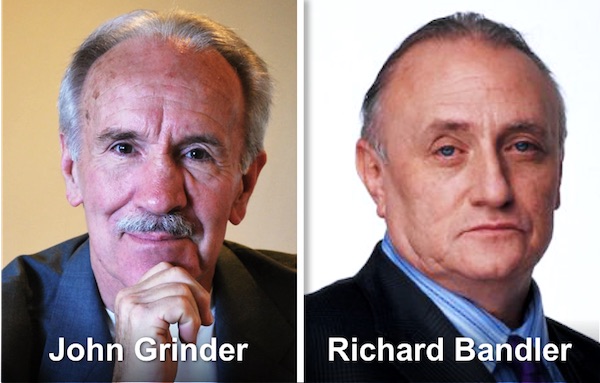If you’re someone who loves to consume content about personal growth, you must have heard of NLP at least once. And upon hearing it, you might be fascinated with how it can virtually change everything within yourself, or frown in scepticism at the premise being too good to be true.
Which one is it? Does NLP work or not?
Before even answering that question, we must first be clear on what NLP actually is.
The acronym NLP stands for neuro-linguistic programming. It is an approach created by Richard Bandler and John Grinder in California, United States, in the 1970s.

According to the approach, there is a connection between neurological processes (neuro-), language (linguistic) and behavioral patterns learned through experience (programming), and that these can be changed to achieve specific goals in life.
NLP can be broken down into three main components, each with its own set of central concepts:
- Subjectivity: We experience the world subjectively, thus we create subjective representations of our experience.
- Our subjective conscious experience is in terms of the traditional senses of vision, audition, tactition, olfaction and gustation. For example, we rehearse an activity “in our heads”, recall an event or anticipate the future we will “see” images, “hear” sounds, “taste” flavours, “feel” tactile sensations, “smell” odours and think in some (natural) language. Thus, manipulation of these sense-based subjective representations can change behaviour (in oneself and others).
- Consciousness: there are a conscious component and an unconscious component, that make up our awareness.
- Learning (modelling): NLP utilizes modelling to be able to codify and reproduce an exemplar’s expertise in any domain of activity. An important part of the codification process is a description of the sequence of the sensory/linguistic representations of the subjective experience of the exemplar during execution of the expertise.
Seem like a typical, harmless, personal growth approach. And to an extent, it is.
The problem arises when the practitioners overclaim at what NLP can do. This is what leads to a lot of misunderstandings & malpractices on NLP, ultimately confusing people to what it is actually.
Up to the founders themselves, they believed that NLP can supplement, if not completely replace, traditional psychotherapy and counselling. Additionally, they say that NLP can help with phobias, mental diseases, psychosomatic illnesses, and even near-sightedness and allergies.
*face palm*
From the 1970s since it was established, up until now, multiple scientific reviews expose that NLP is built on out-of-date metaphors for how the brain functions that contradict the current neurological theory and contain several factual mistakes. They also discovered that the supporting researches on NLP had serious methodological errors, and that three times as many studies of considerably higher quality failed to replicate the “amazing promises” made by Bandler, Grinder, and other NLP practitioners.
So, let’s leave behind the idea of NLP as a magic pill in the 1970s.
With that being said, NLP is established based on a compilation of ideas from numerous fields (operant conditioning, behaviourism, psychoanalysis, cognitive science, etc.). Cognitive Linguistics, for example, which is quite similar to NLP, is recognised as a legitimate science. It’s just that the fundamental notions of NLP treat the brain as if it were a computer, which made sense in the 1970s, but is now widely seen as the worst error of the computer era. For the time being, this is how the scientific community views NLP. Some even argue that current NLP is not making magical claims anymore, and instead identifies as an art of active listening & modelling.
Ultimately, NLP itself has a role to play in resolving this by getting more involved in research, navigating their way of conducting solid research in sectors that lack established academic organisations, legitimacy, or financing.
So now, as we talk about how you can apply NLP techniques to change your behavioral patterns, keep in mind that these techniques are incompletely cherry-picked by NLP, which may or may not work on you. There’s no harm in trying, but if you want to practice these techniques effectively, do study it in the frame of where the techniques are actually coming from. For example, if you want the anchoring method to have a fruitful effect, study it from the actual concept’s perspective, which is conditioning, in the field of psychology.
- Anchoring.
As mentioned in the example before, anchoring is based on the psychological notion of conditioning, which states that certain behaviours are triggered by a stimulus. And it aids in eliciting the desired response through repetition. The purpose of this technique is to generate positive responses on command by linking a specific mental and emotional state with an anchor. You can utilise this if you’re in need of an emotional boost.
- Recall a time when you felt the intensely good emotion you want to elicit in other situations (e.g. feeling achievement the moment you got a promotion).
- Incorporate sensory clues related to that state (e.g. what you saw, felt, smelt, heard).
- Bring the memories back to its most vivid moment, then connect your sensations to an anchor (e.g. twist a ring on your finger, pinch your earlobe).
- Repeat the instructions above after a short break.
- To evoke the powerful feeling of achievement, test the anchor (e.g. squeeze your earlobe).

- Reframing.
Reframing is the process of perceiving unpleasant occurrences through a different ‘frame,’ shifting the focus from negative to positive. When the amygdala is triggered by memories of past experiences, it produces a feeling that is similar to the original. Reframing here reminds us that the nature of that feeling isn’t set in stone, and that we may break automatic habits and choose rational replies over gut ones.
- Make a list of the thoughts, feelings, or behaviours you’d like to modify.
- Make contact with the part of yourself that is causing you to be in a bad mood. This could be a visual, audible, or facial expression.
- Find the positive intention behind that part. Let’s say you have a fear of flying. The sound of a plane’s engine taking off triggers anxiety because it wants to protect you. This intention is good, but the response is not productive for you.
- Concentrate on the positive intention and try two or three responses that will help you achieve it. Recognize the need for protection and self-preservation, which is why you chose the safest mode of transportation (flying vs. driving).
- Confirm that your subconscious is totally committed to experimenting with different answers and will not sabotage your reframing efforts. Check for inconsistencies in your views, and if you find yourself making excuses, go back to step one and come up with alternate responses.

- The Swish Method
This method aims to detect negative mental and emotional triggers and replace them with a positive response. You don’t have to do anything when employing the Swish technique; instead, you become aware of the options accessible.
- Identify the feeling that triggers anxiety. For example, even if you’ve done your best to prepare for an exam, you may be concerned about your performance. Nervousness would be the trigger feeling in this scenario.
- Then, understand how your mind and body react to such emotions (e.g. nail biting, knots in the stomach, etc.) Make a mental picture of the environment in which this occurs (e.g. as you walk into the exam room).
- As you physically enter the context where the negative thoughts occur, consider how you would like to respond in an ideal situation (e.g. confident, well-prepared, optimistic, etc.).
- This is referred to as a “replacement thought.”; visualizing the bad condition in your mind and figuratively set the replacement concept on top of it. Make the positive emotion appear larger, stronger, and more vibrant, whereas the negative emotion appears black and white or hazy.

As someone with a Bachelor’s degree in psychology, I try my best to make this article as educational as possible for everyone; laying out the truth in the midst of balancing every possible view.
The point of this article is to not simply tell people to do (or not do) NLP. It is simply an article designed so you can make informed decisions about NLP itself. On what it actually is, what are the benefits, and what are the limitations. Those things need to be clear before we decide which technique are we going for, or whether to go or not at all. Base your actions on legit knowledge, not just choosing to follow NLP because of the hype.
Keeping in mind on what NLP does, and what it does not do, feel free to pursue whichever technique that will work for you. Ultimately, NLP is just one, of the many, many subjective self-help and personal growth tools out there. Whichever tool you end up with, as an avid lover of personal growth, I’m always rooting for your personal development journey 🙂
All the best!
